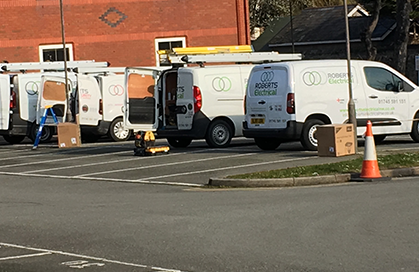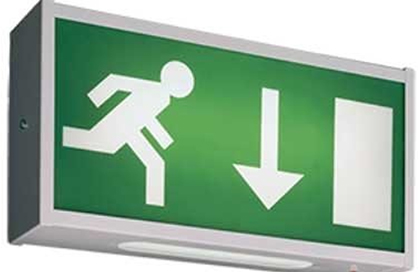quotes
Emergency Lighting Installation and Testing
NORTH WALES, CHESHIRE, WIRRAL, CHESTER, WREXHAM
Another important element of fire safety is a comprehensive emergency lighting system. Ensuring that your staff can locate emergency exits and evacuation routes during a fire – where smoke often impairs vision and power failures can take out primary lighting – could be potentially lifesaving.
We make sure that all your emergency lighting meets standards set out by BS 5266 part 1 regulations, with periodical inspections to check for faults, and can advise on siting and luminance options for the systems we install.

Why test Emergency Lighting?
Over time emergency lights fail for a number of reasons which include
1) Lamp/tube failure.
2) Back up battery failure.
3) Internal circuit board failure.
4) Changes to the premises which make the existing provision inadequate.
UK legislation places a duty of care on persons in control of premises including employers to provide a safe means of escape. Emergency Lighting Testing provides a certificate to prove compliance. The certificate is evidence and may be of use if facing legal action to demonstrate the organisation has complied with its duty of care. Some local authorities require emergency lighting testing as a condition of licences they issue such as public houses and other places of public gathering. Some insurance companies require Emergency Lighting Testing to be undertaken as a means of reducing risk.
What types of premises have Emergency Lighting?
Below is a list of examples but this is not a complete list..
1) Public Premises. Hotels, Shops, Sports Venues, Public Houses.
2) Businesses. Factory, Offices, Flats/Landlords, Child Care Facilities.
3) Government. Schools, Hospitals, Care Homes
What is involved in Emergency Lighting Testing?
Emergency Lighting Testing involves turning off the mains power to emergency lighting for a period of time and checking to see if the emergency lighting provides adequate light for safe escape. The certificate includes a list of technical checks to be verified. Here are some examples.
1) Adequate illumination of escape routes.
2) Position of directional signs.
3) Lights operate for full length of time required.
4) Records of testing kept up to date.
How often should Emergency Lighting be tested?
This varies according to the type of system and the use of the premises. In general emergency lights usually require:
1) Annual full 3 hour test.
2) Monthly simulation of mains loss.
3) Daily visual check of LED charging on emergency light.
10 Reasons to Choose Us?
Emergency Lighting
- Fully Qualified Approved Electricians.
- Over 20 Years experience.
- Competitive Pricing.
- Fully Insured.
- Quotation provided in writing upon request.
- Certification provided on completion.
- 6 Year NICEIC Platinum Promise covers all works.
- Quality Assured using NICIEC Registered electricians.
- We register the work for compliance with Part P Building Regulations.
- Trust Mark Registered. Government endorsed standards for trade.
